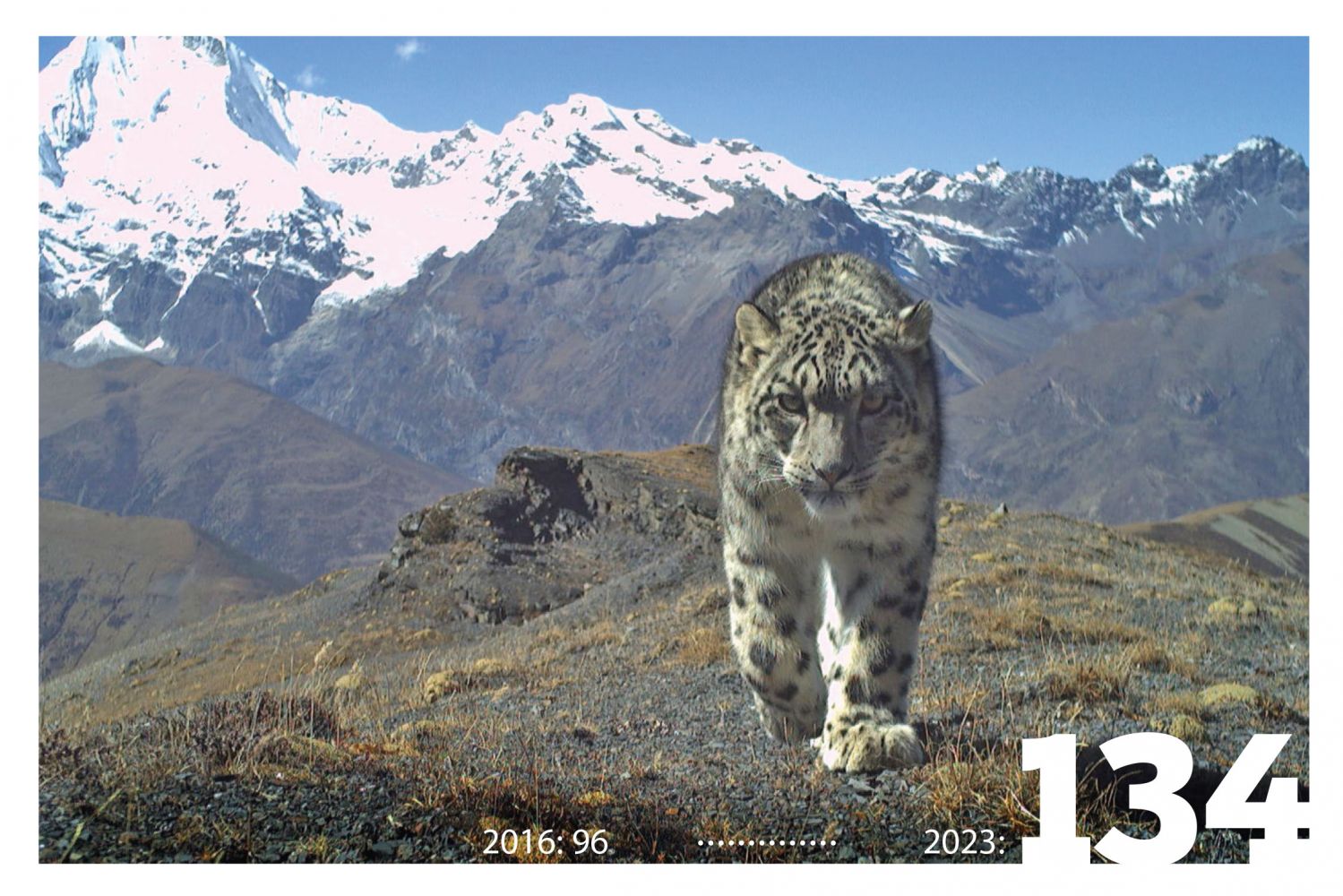
… the country has 39.5 percent more leopards than 2016
The National Snow Leopard Survey 2022-2023 recorded an increase in the number of snow leopards in the country. The survey confirmed 134 leopards.
The snow leopard survey in 2015 recorded 96 snow leopards. The increase is 39.5 percent in the past eight years.
The second national survey launched on September 16 in celebration of the birth of Royal Princess revealed that an overall density of 1.34 snow leopards per 100km was recorded.
Energy and Natural Resources Secretary, Karma Tshering, said that the survey results are compelling evidence confirming Bhutan as a stronghold for snow leopards.
“However, it is also a species in peril; the IUCN Red List designates the snow leopard as Vulnerable. Without protection, this magnificent species could face extinction in the near future.”
According to the Department of Forest and Park Services (DoFPS) report, with a vast expanse of suitable snow leopard habitats spread across the northern part of the country adjoining neighbouring countries of India and China, Bhutan can serve as a source population for snow leopards in the region.
Country Director, WWF Bhutan, Chimi Rinzin, said that WWF Bhutan is fully cognizant of the challenges of increasing conflict, and we will strive towards addressing this issue to sustain the future of snow leopards while safeguarding the livelihoods of the herder communities.
“The increase in snow leopard number is yet another milestone achievement for Bhutan’s conservation journey. It clearly demonstrates the government’s leadership and conservation ethos of the highland communities,” he said.
Deputy Chief Forestry Officer, DoFPS, Letro, said that the conservation policy and effort from Bhutan is vibrant on wildlife preservation. “National Conservation Policy and community-based conservation initiatives which makes community people the pioneers of this preservation could have made this increase possible.”
The global population of snow leopards is declining with an estimation between 4,080 and 6,590. However, in Bhutan, the results of the national survey indicate that conservation efforts in the country are having a positive impact on maintaining the viable population of snow leopards.
The snow leopard is listed under Schedule I of the Forests and Nature Conservation Act 2023, and an illegal act against the species is an offence of fourth-degree felony.
Survey findings say that the evidence of habitat overlap between snow leopards and other large carnivores like tigers and common leopards.
The survey also recorded a deer species called White-lipped deer or thorold’s deer (cervus albirostris) from Paro Divisional Forest Offices, which is a new species record for the country.
Snow leopards are threatened by habitat degradation, prey depletion, conflict with humans, poaching, and climate change.
The snow leopard is classified as vulnerable on the International Union for Conservation of Nature Red List.
Snow leopard habitats span over 9,000km across the northern alpine region—a total of 310 camera trap stations were set for the survey.
Snow leopard density was comparatively higher in western Bhutan than in central and eastern Bhutan.
A new finding was that Bumdeling Wildlife Sanctuary and low-elevation regions of Thimphu Divisional Forest Office was captured.
The second national snow leopard (panthera uncia) survey was conducted in 2022 using the robust and state-of-the-art camera trapping approach. The survey was completed by over 70 frontline rangers.
The survey was supported by Bhutan For Life programme and World Wildlife Fund Bhutan.












